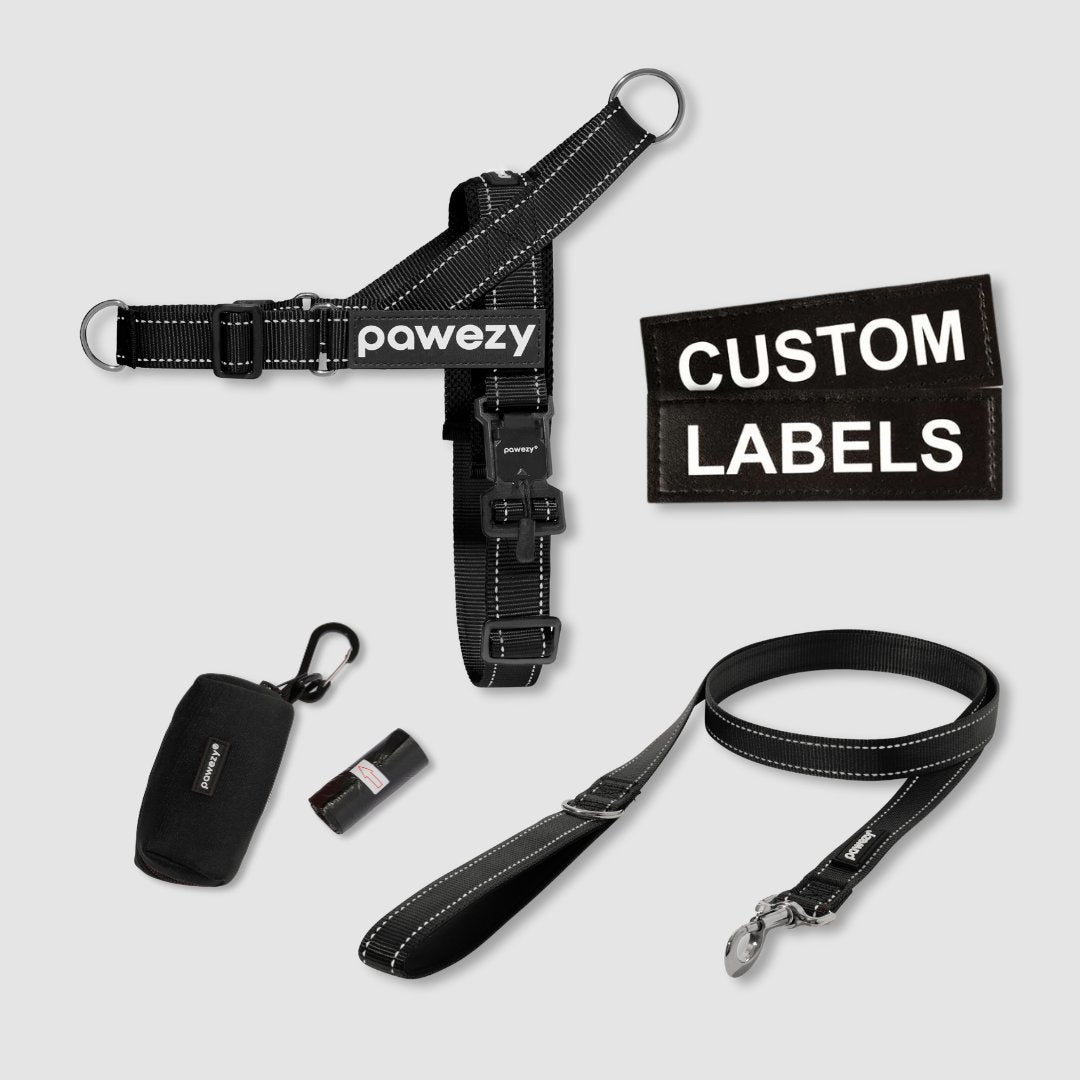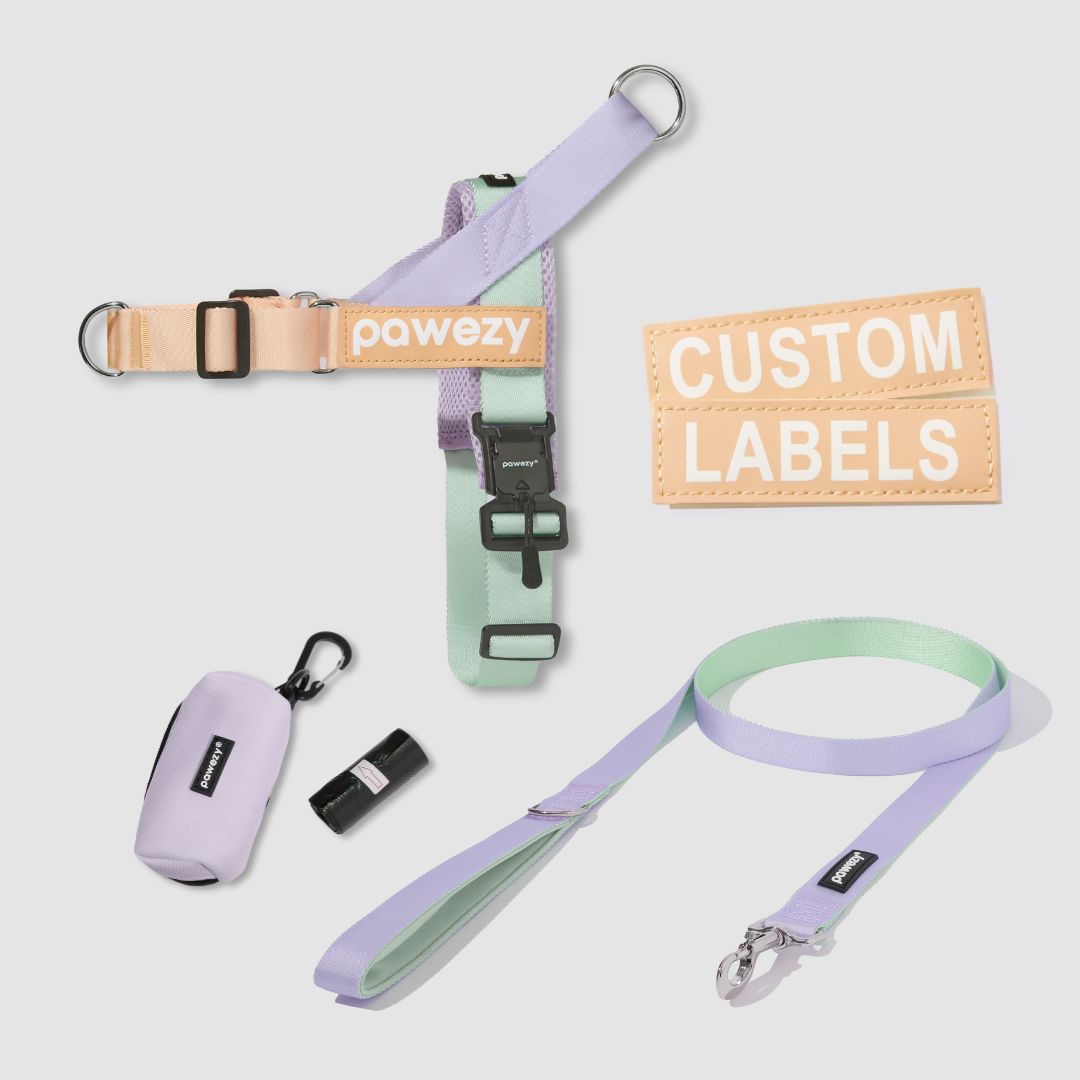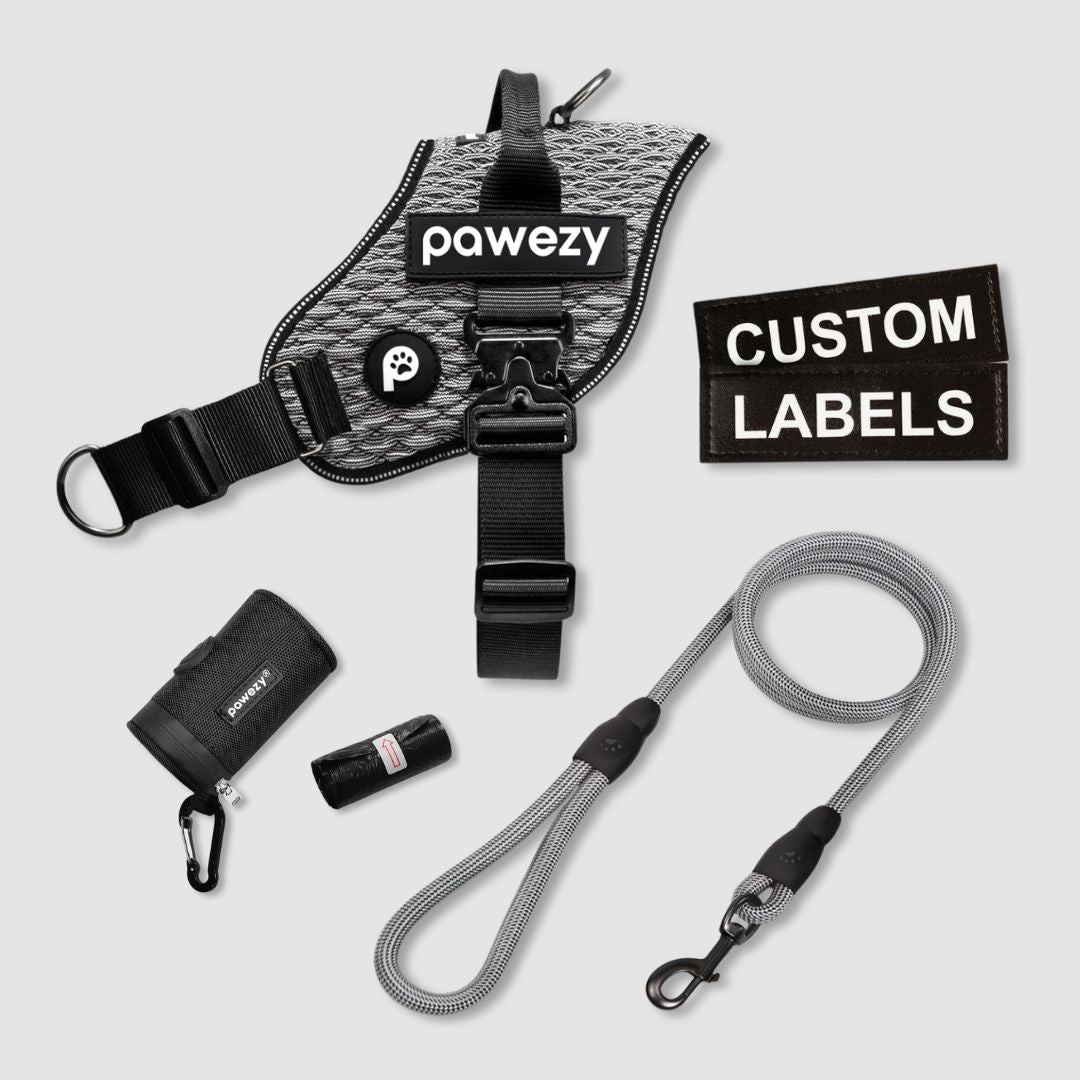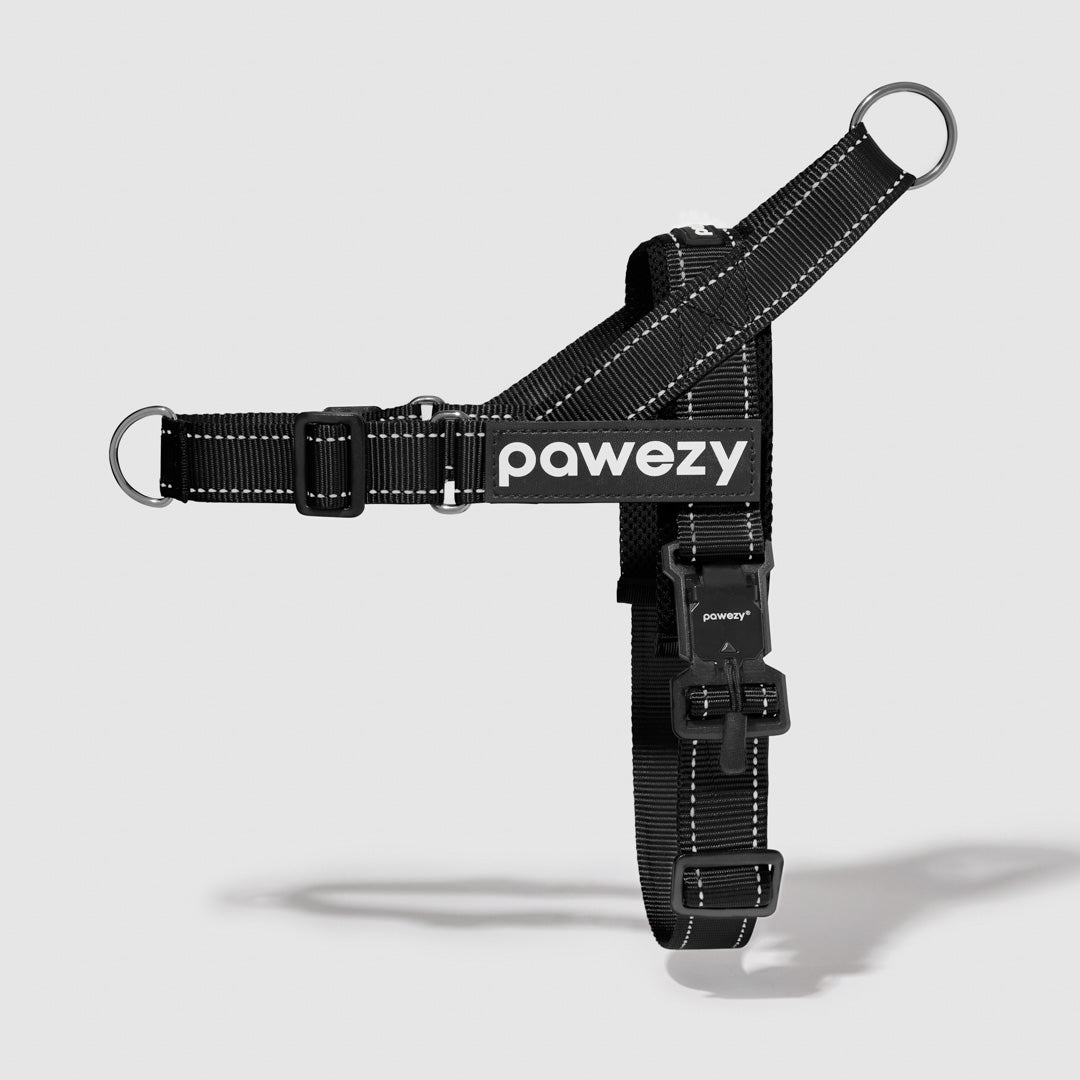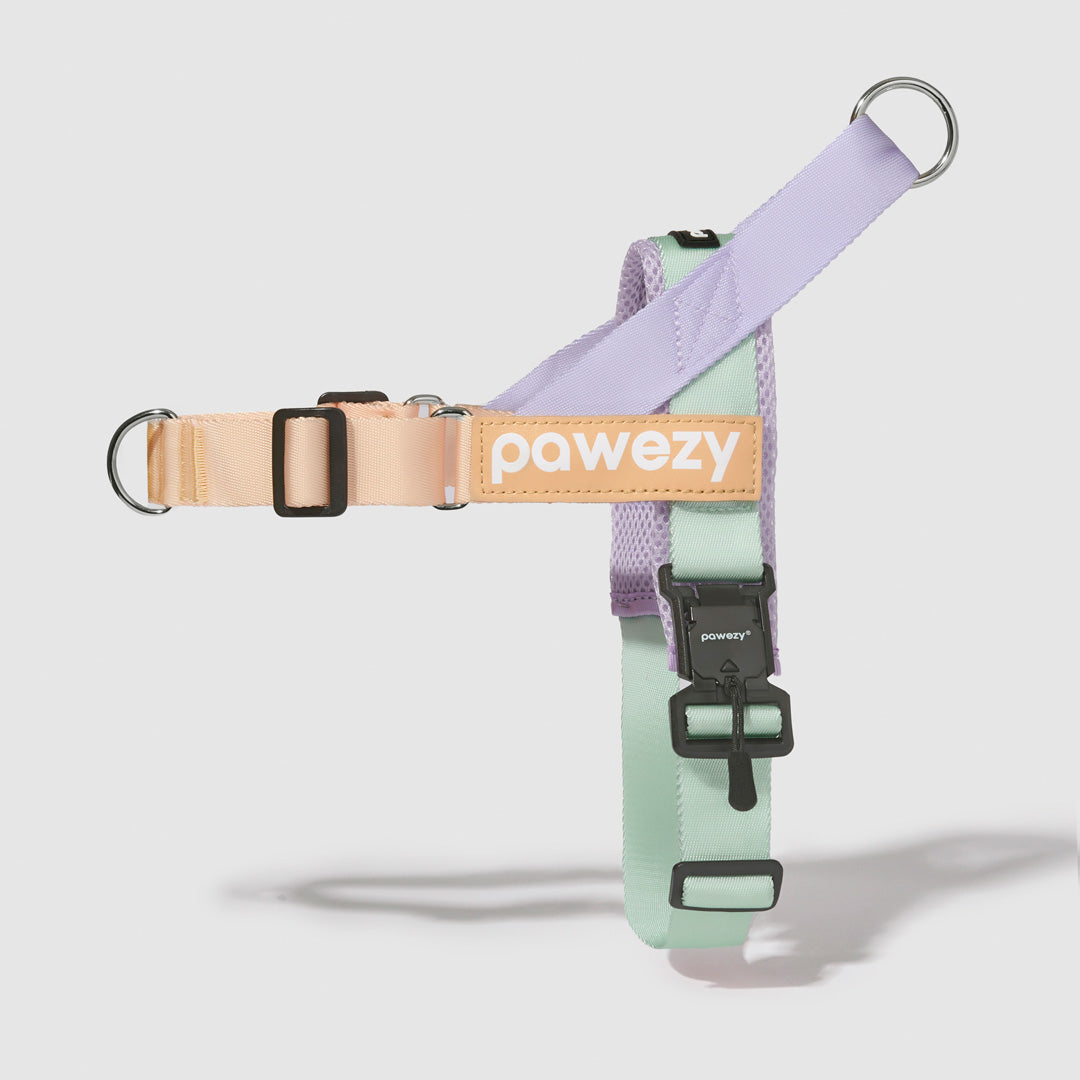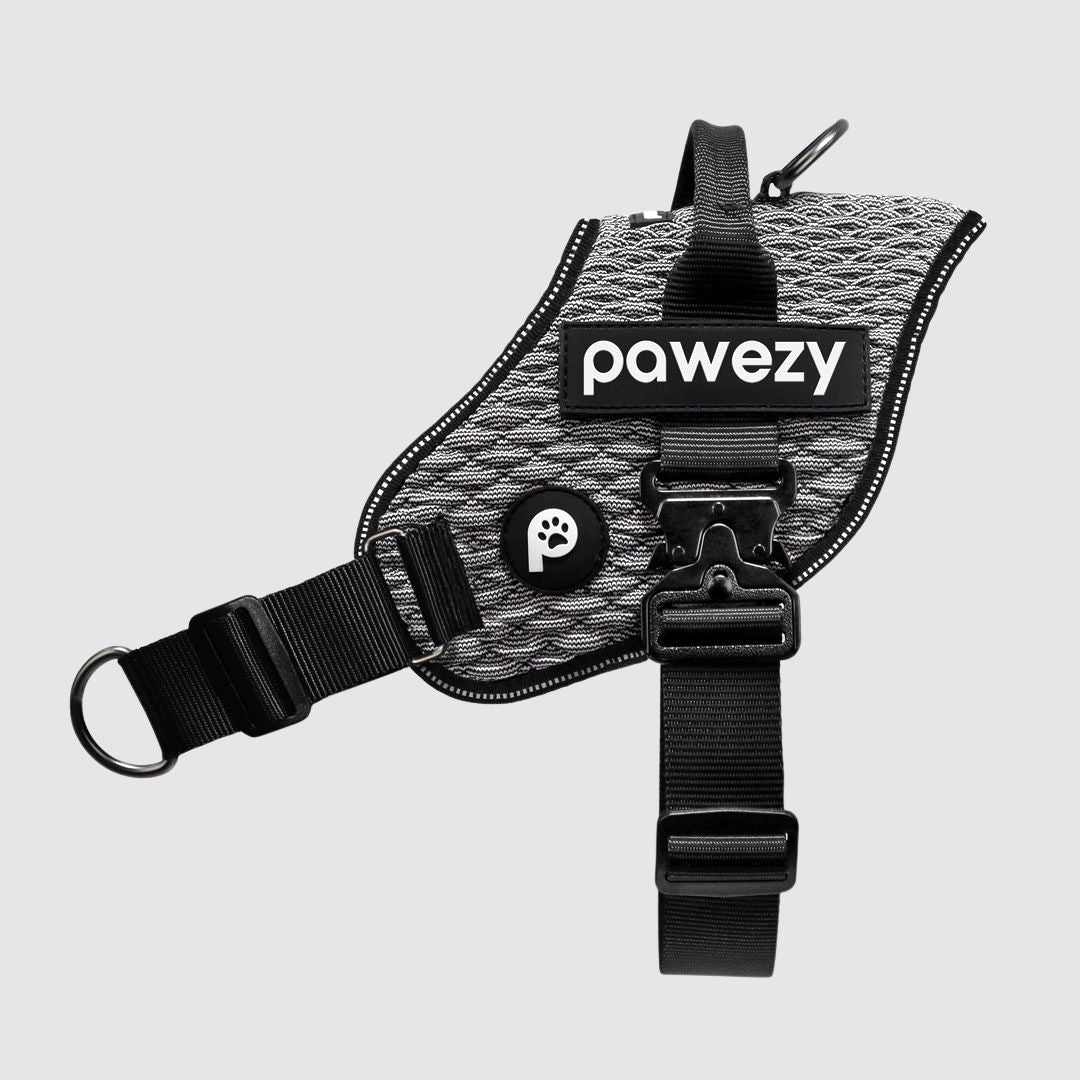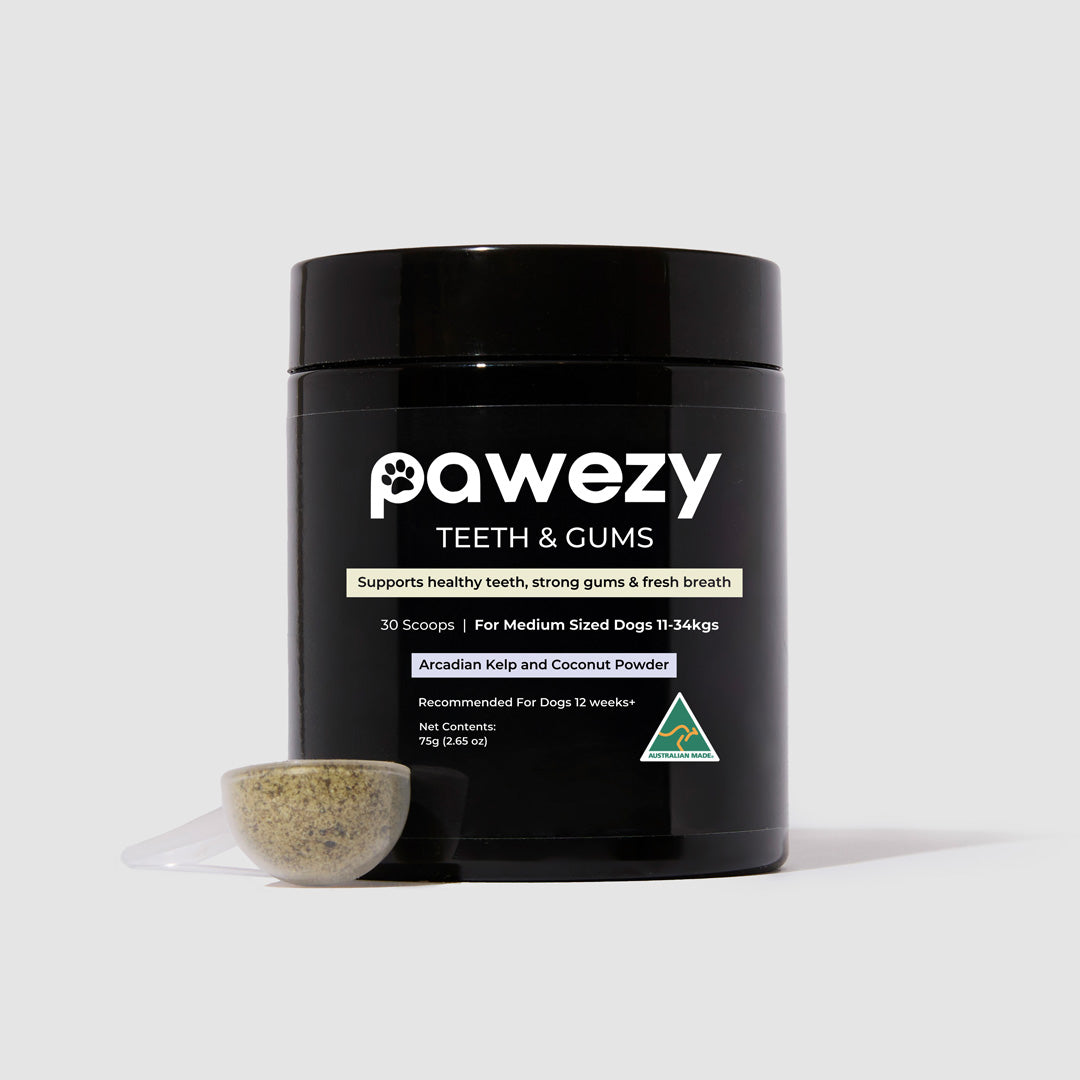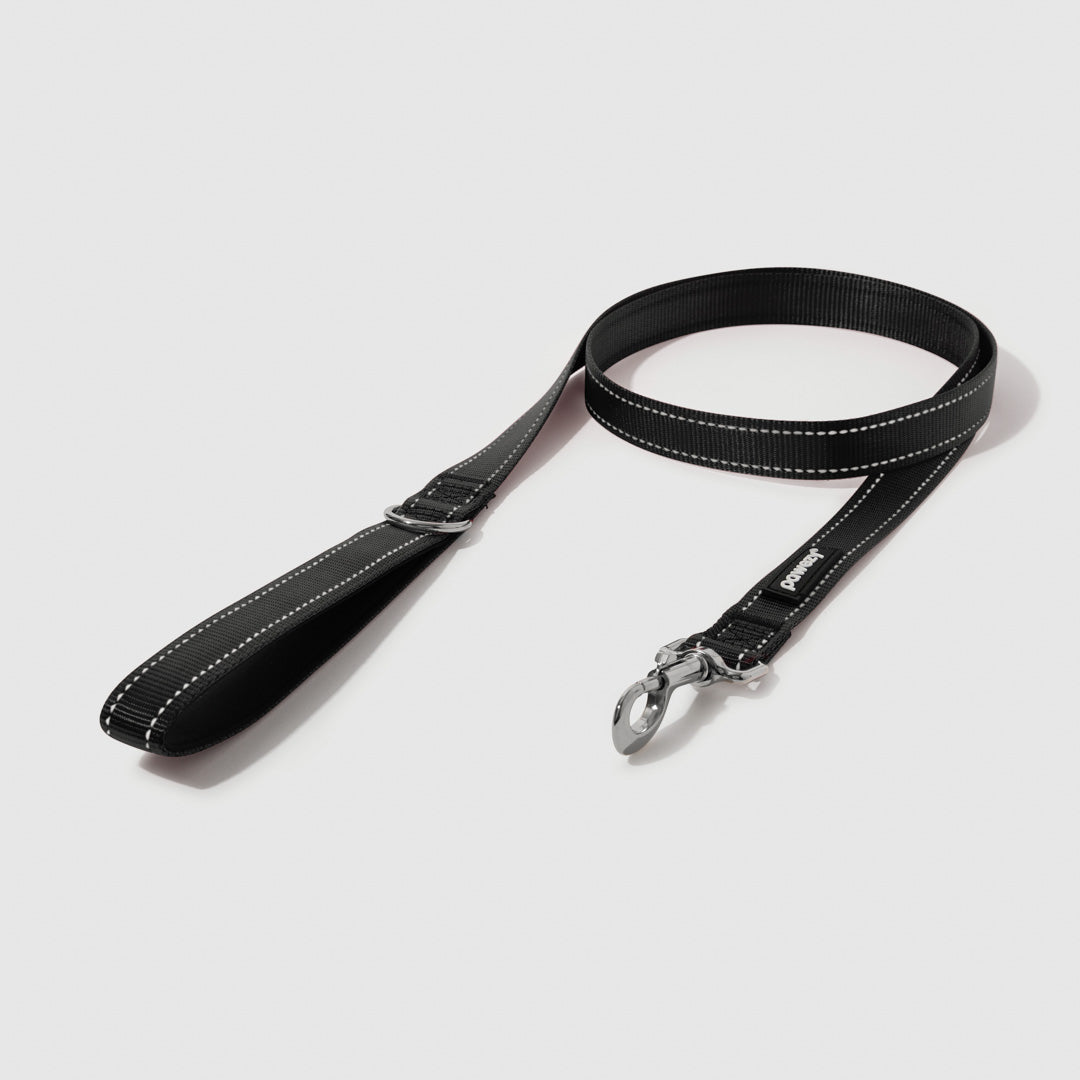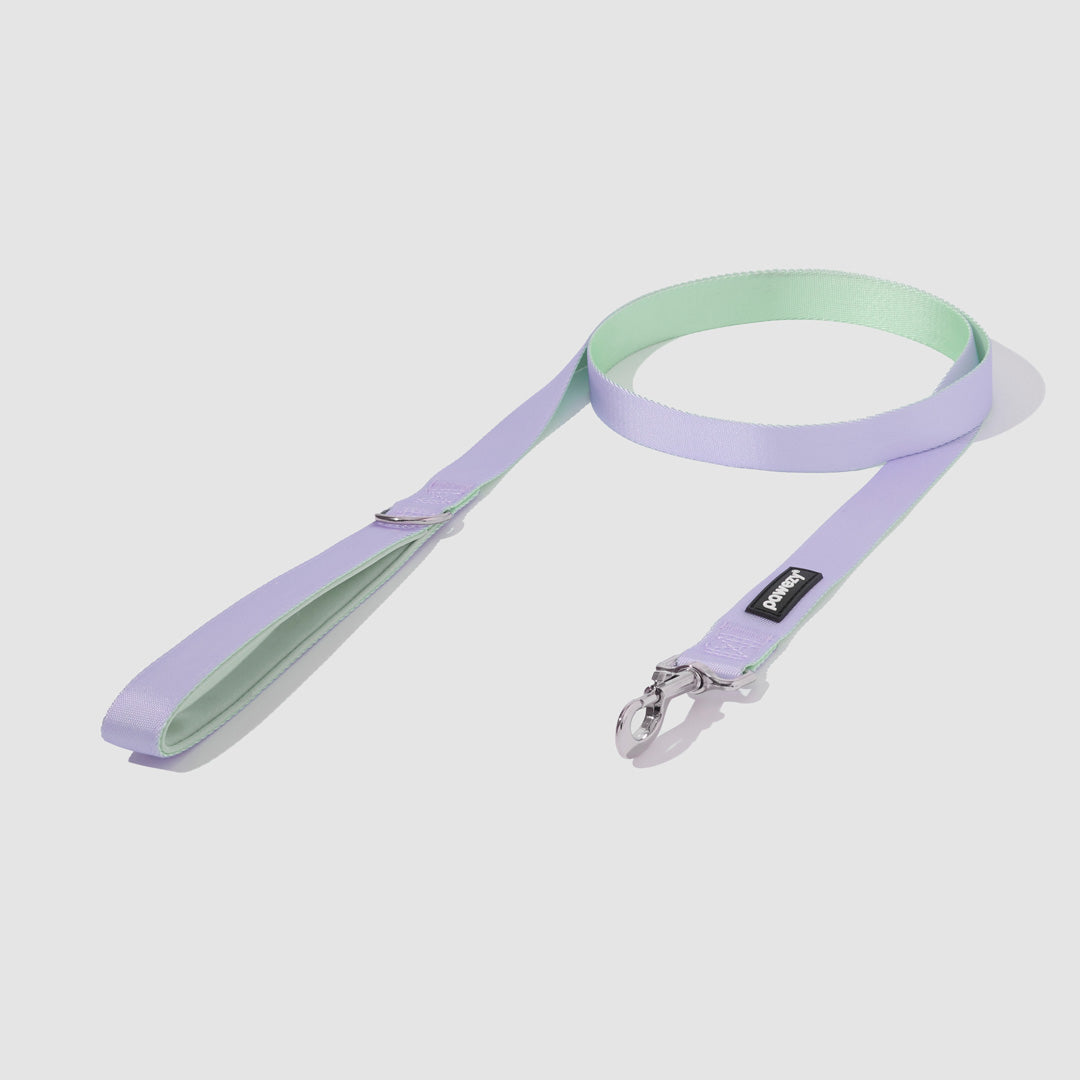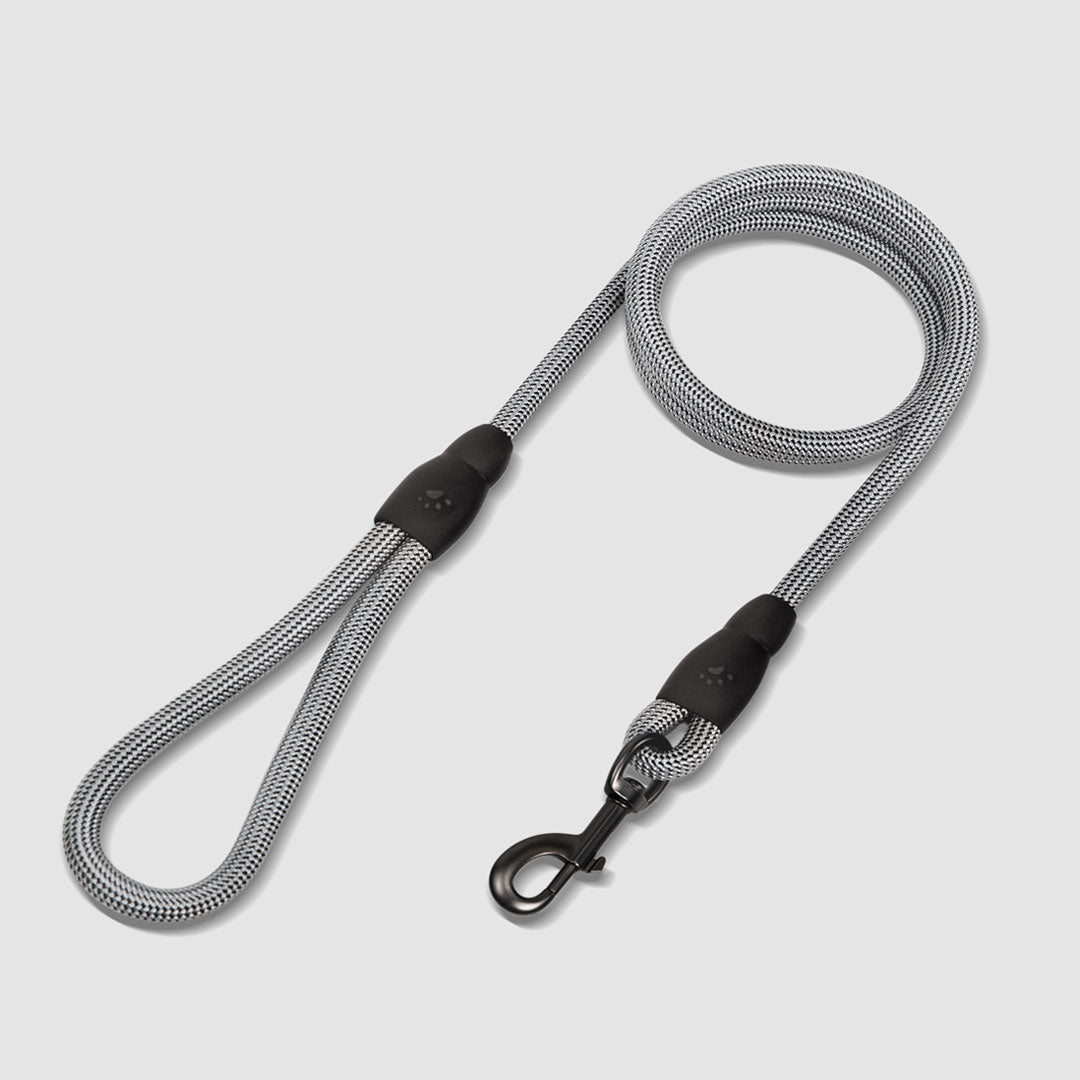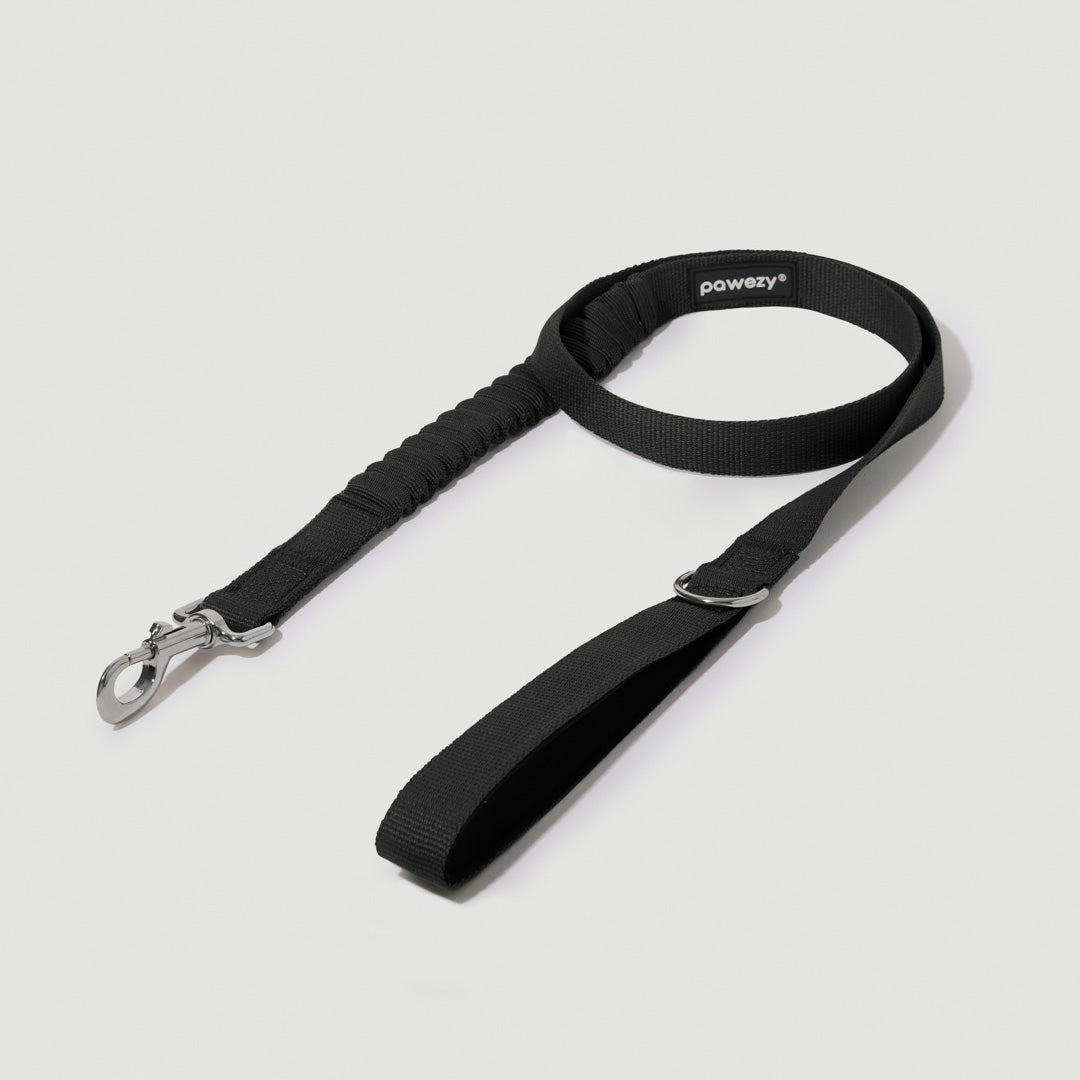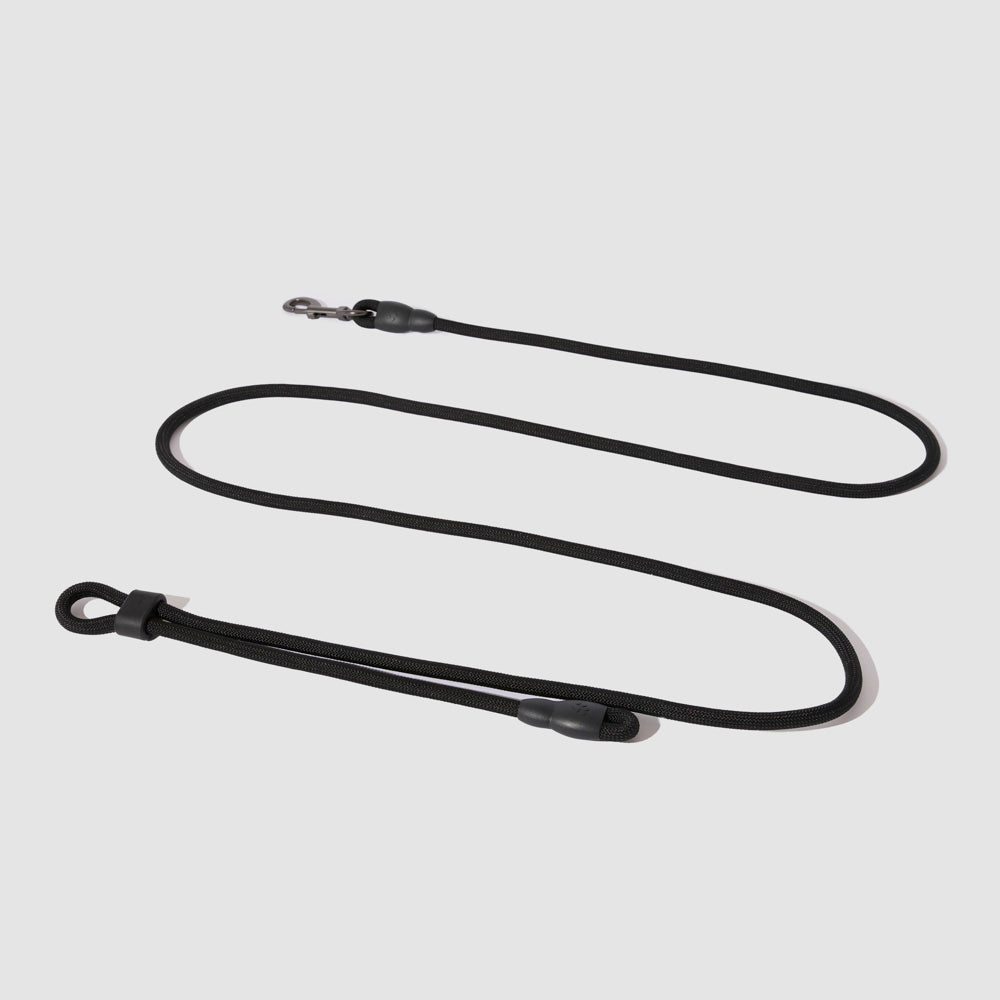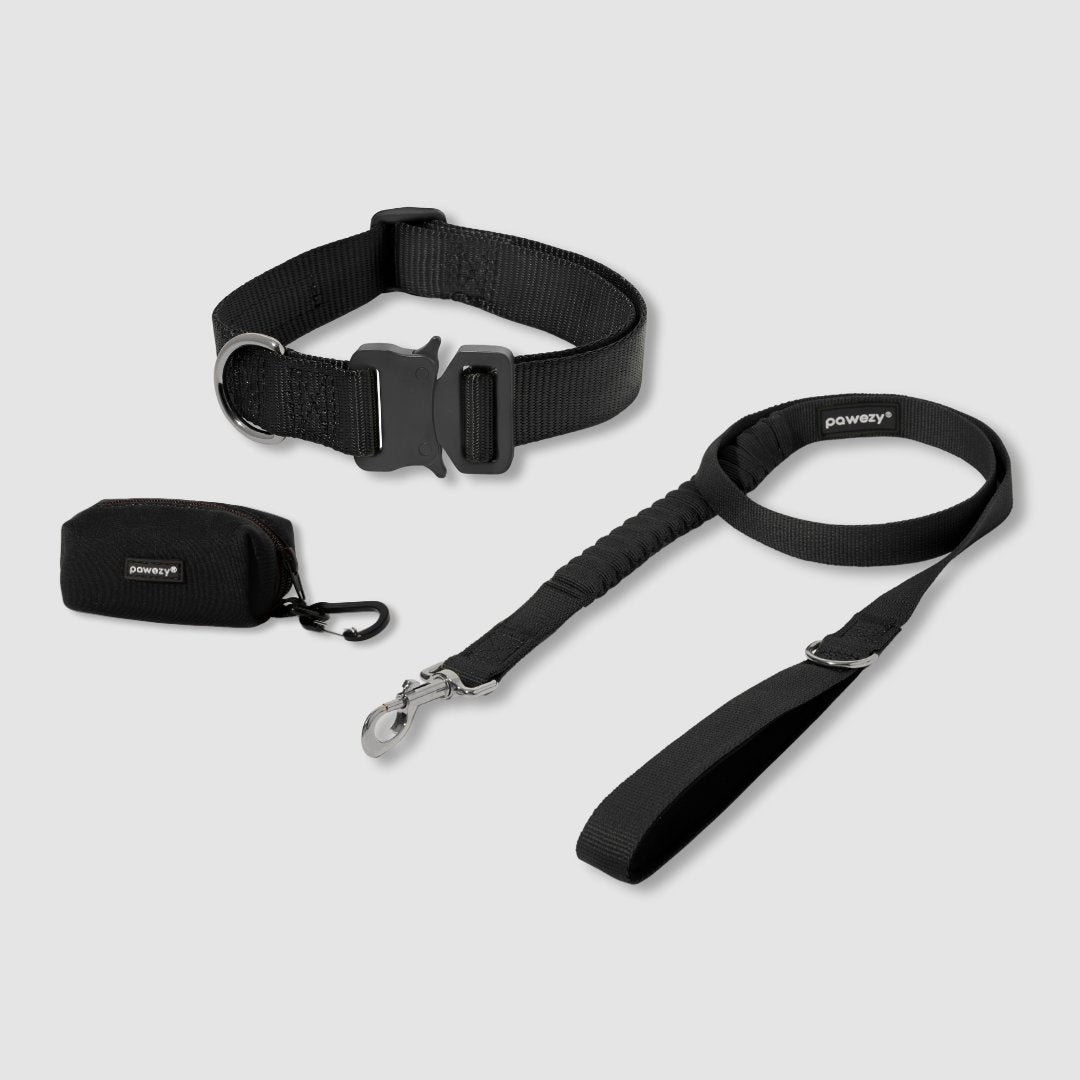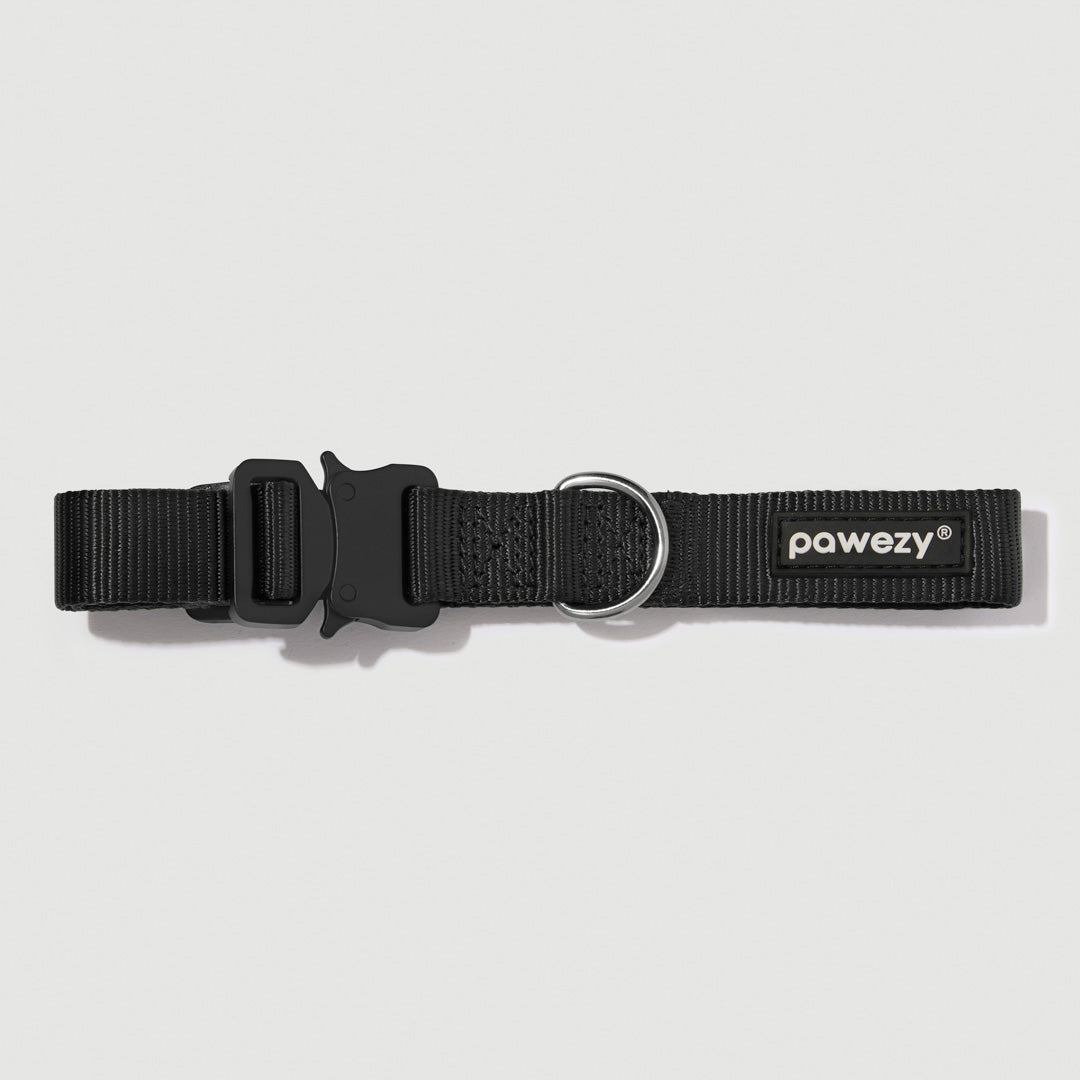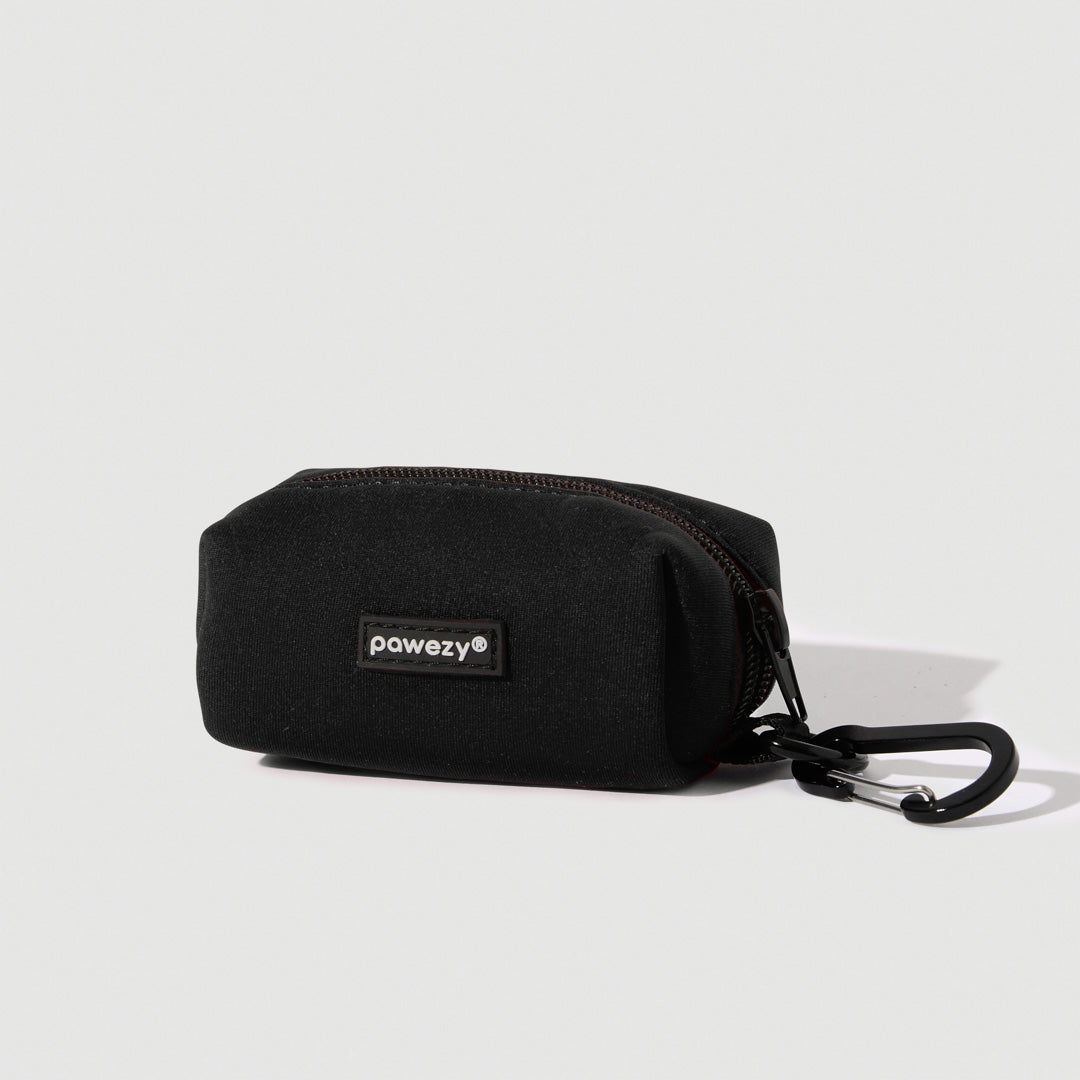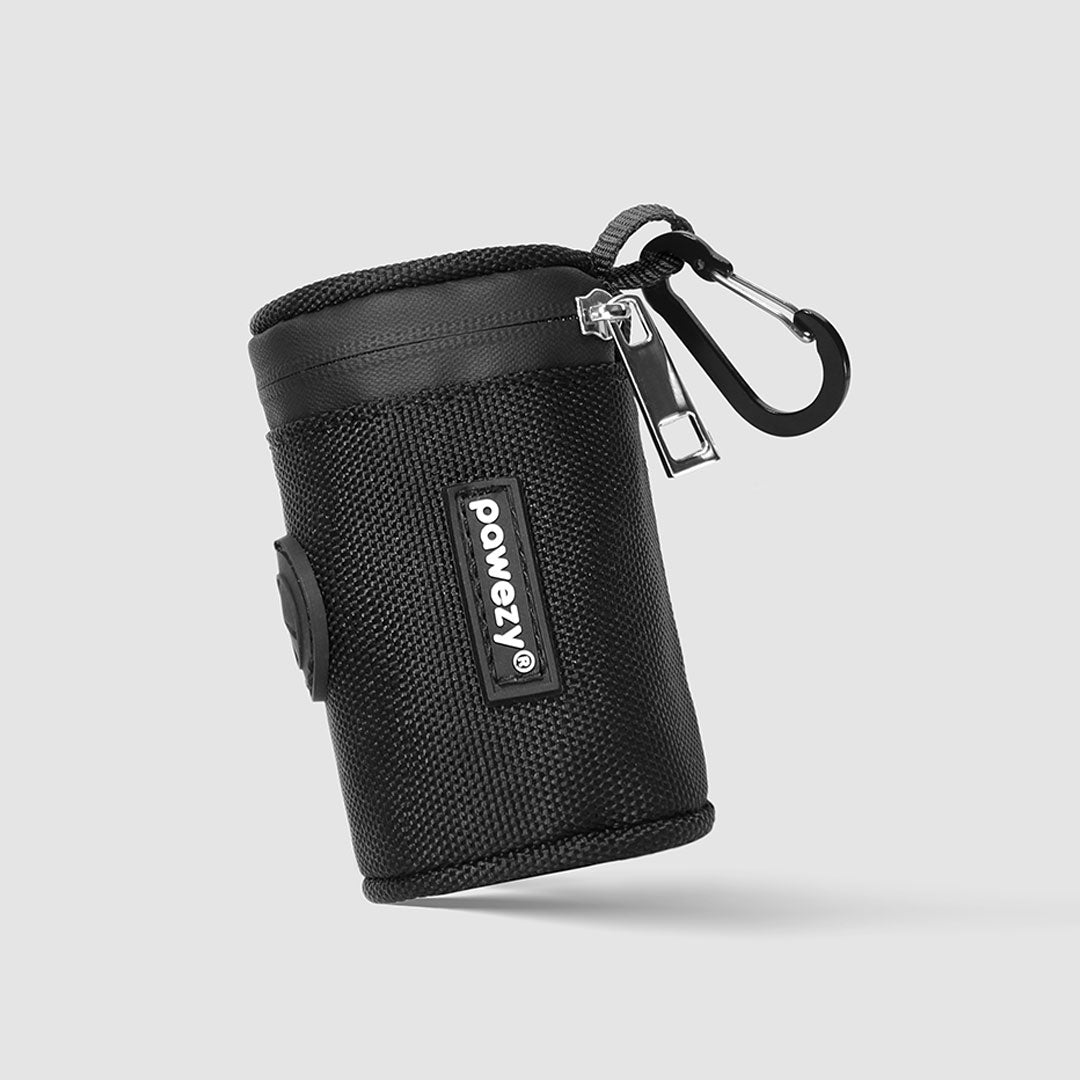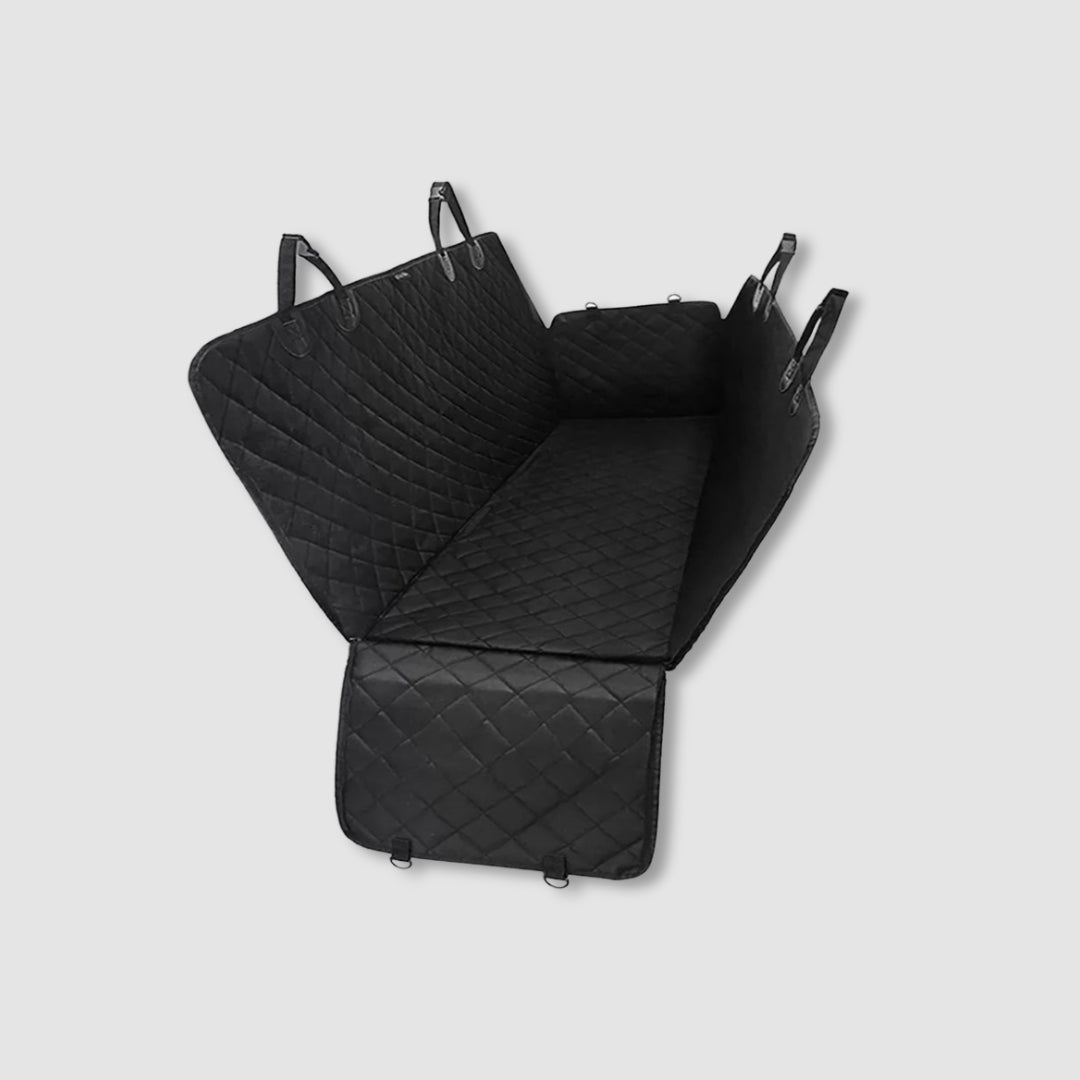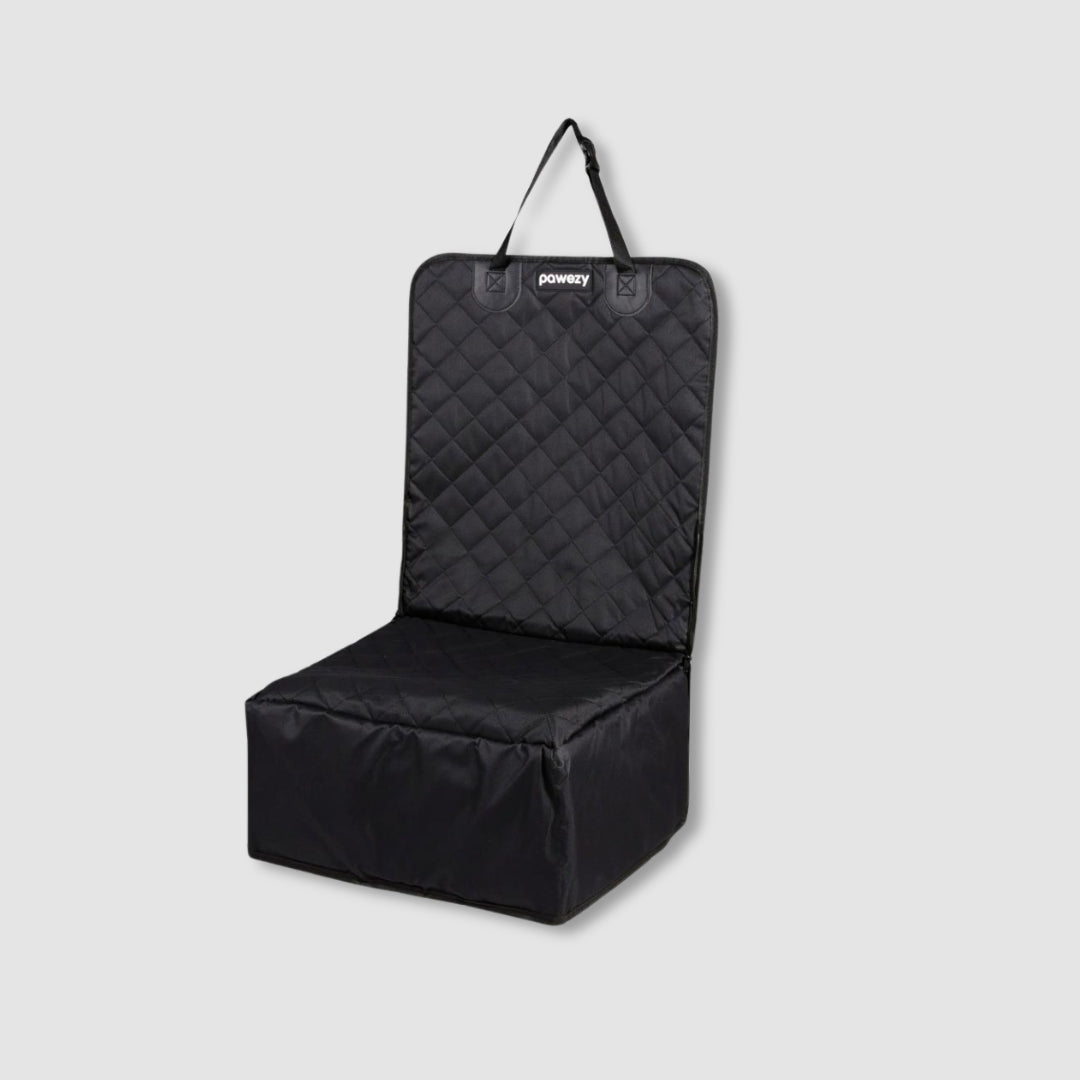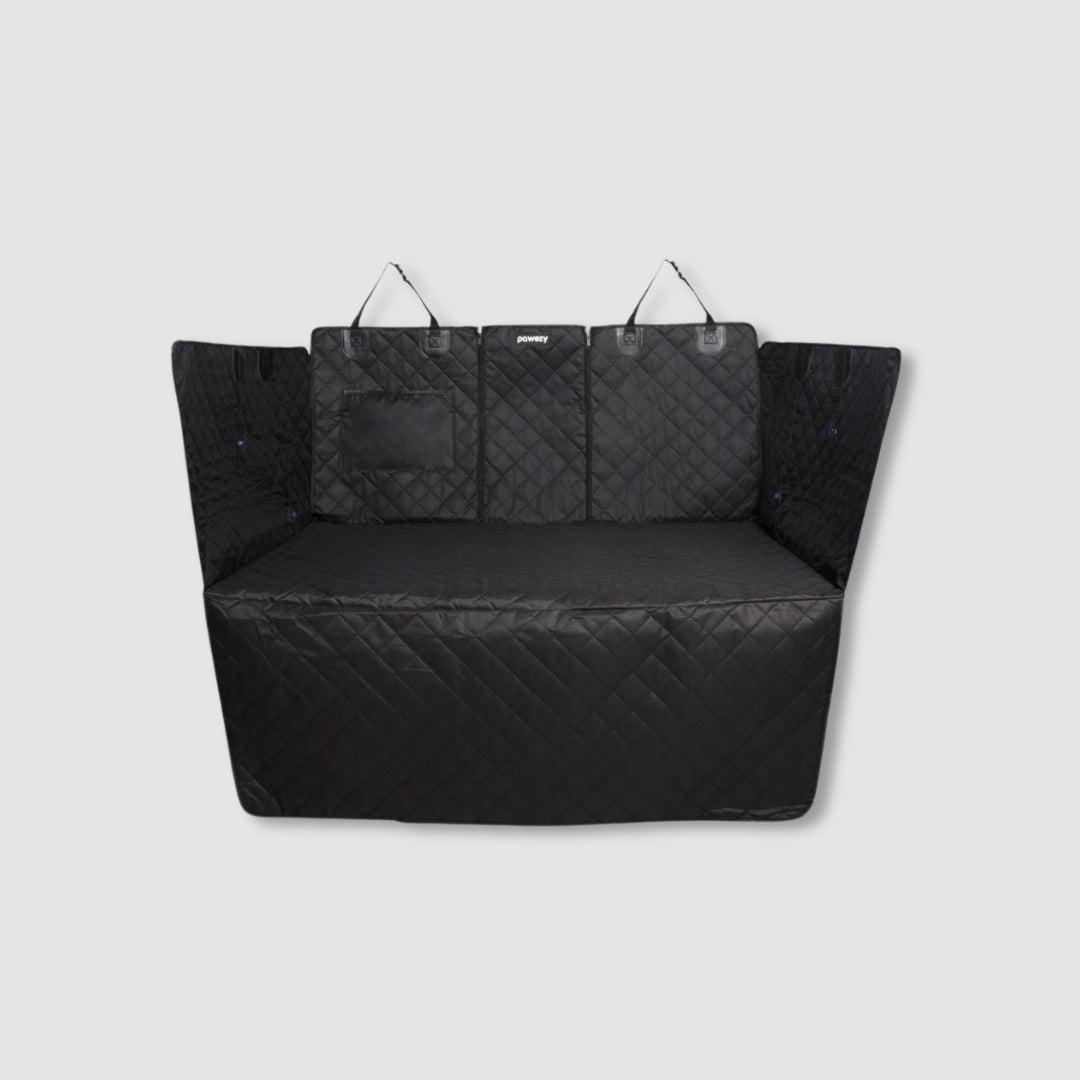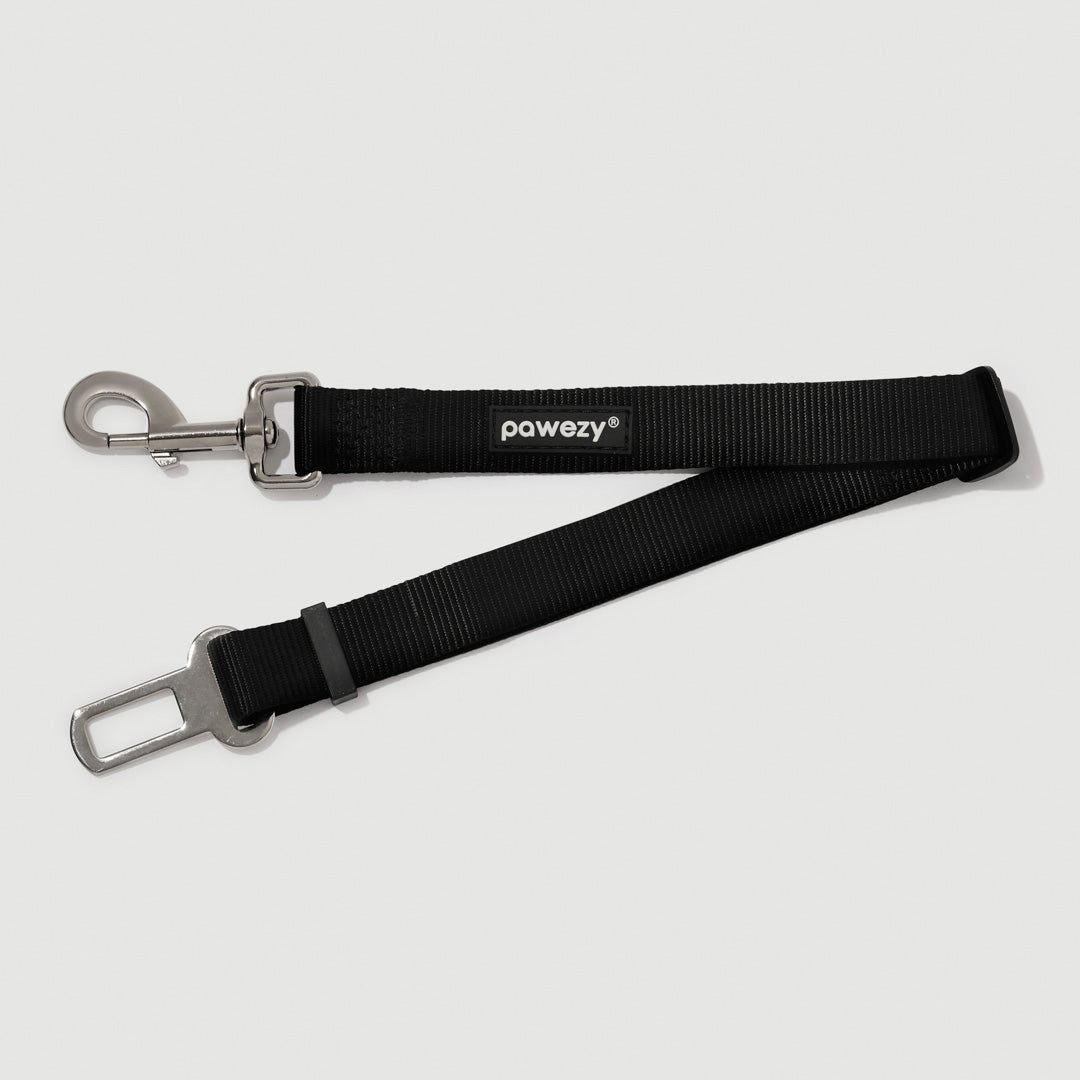5 Steps to Help a Fearful Dog Feel Comfortable Wearing an All-Day Harness

As a dog lover, you probably know you’re not supposed to leave a harness on your dog all day…in most cases. But there may be instances in which your pooch absolutely needs to wear their harness 24 hours a day - maybe during training, an overnight camping trip, post-surgery, or for mobility issues.
Unfortunately, things can quickly go downhill if your dog is on the fearful side. But don’t worry; this article will cover 6 steps you can take to make your dog feel more comfortable in their all-day harness.
Step 1: Desensitize the Dog to the Areas the Harness Will Touch
Preparing your dog to wear an all-day harness starts before your dog has even laid eyes on the equipment. The first goal should be to desensitize your dog’s body, specifically in the areas where the harness sits (across the dog’s chest, underneath their front legs, and around their shoulders, for example).
You won’t just pet your dog—you’ll gently, intentionally touch them in ways that mimic how a dog harness feels. For example:
- Lightly stroke your dog’s chest where the front strap would rest.
- Gently lift a front leg as if guiding it through a harness loop.
Be sure to offer a treat when your dog remains calm while being desensitized.
Since your dog is more fearful than the average pup, they may show signs of stress (pulling away, aggression, hiding, shaking, or stiffening). Back off and try again later with a slower approach.
Start with short desensitization sessions and lengthen them over time.
Step 2: Carefully Introduce the All-Day Harness to Your Dog
Instead of snapping the harness on your dog straight away, try to make a careful introduction. Open up the harness’s packaging and allow your dog to sniff at it and become familiar with it. You can also bring it into a room you’re both relaxing in or place it near your dog as they’re drifting off for a nap. When they go over and interact with the harness (bop it with their nose, run up to it, paw at it, etc.), reward them with a treat.
Over time, you’ll find that your dog becomes more and more interested in the harness.
As your dog gets more comfortable with the harness, encourage them to put their head or foot into it (depending on the harness’s design). And reward them along the way. Some dogs will immediately gravitate to this without much coaxing, and others will need a more intensive introduction.
Step 3: Start With Short Harness-Wearing Sessions and Build Up Slowly
If feasible, don’t start off with all-day harness-wearing sessions right away. That can be overwhelming for a fearful or sensitive dog, potentially leading to frustration, resistance, or complete shutdown. Instead, give your pup a fair chance at success by easing into it with short, low-pressure sessions.
Begin by letting your dog wear the harness for just a few minutes at a time in a familiar, relaxed environment like your living room or backyard. Use positive distractions like playtime, treat puzzles, or cuddle sessions to help your dog associate the harness with good things. Over time, gradually extend the duration based on your dog’s comfort level.
As you increase the time, keep an eye out for signs that your dog is adapting well and becoming more at ease. These include:
- Relaxed body language. Ears are in a natural position, eyes are soft with normal blinking, and no stiffness or tension in their posture.
- Normal movement and behavior. They walk comfortably, engage in play, and move around without hesitation.
- No fussing. They’re not trying to scratch, bite, or remove the harness, and may even act as if it’s not there.
If your dog shows these signs, it means you're on the right track. Keep the sessions positive and remember that any progress is progress.
Step 4: Be Patient at Every Turn
One of the most important things to do with fearful dogs is to be patient. It could take several days or even weeks for them to warm up to the harness and be okay with wearing it all day long. On top of that, progress in this area won’t necessarily be linear – your dog might seem like they’re getting the hang of things one week and lose ground the next.
If they do show signs of regression, give them some grace, go back a step or two, and reinforce the basics. And be sure to sprinkle in lots of encouragement and treats.
Again, keep sessions short and sweet.
Step 5: Remain Consistent
Consistency helps your dog understand what to expect, which builds confidence. If you only practice once every few days, your dog may forget the progress they've made and feel like they're starting over each time. We recommend daily sessions for those reasons.
Even if things seem to be going at a snail’s pace, keep going. When you’re steady, gentle, and committed to helping them succeed, you never know when your doggo might surprise you.
At the same time, don’t feel down on yourself if you miss a day of harness training; you are human after all. Just get back into gear and try to be as consistent as you can.
Harness Comfort is Paramount for Fearful Pups and All-Day Use
Not all harnesses are created equal; they run the gamut from extremely comfy to highly uncomfortable. And if yours isn’t crafted to be truly comfortable, you and your dog could be in for a frustrating time. When shopping for your all-day dog harness, opt for an adjustable one that’s made of lightweight, breathable materials that’ll keep the following issues away:
- Chafing and irritation. Especially under the armpits or around the chest, where constant rubbing can cause soreness or hair loss.
- Overheating. Dense, non-breathable fabrics can trap heat, especially during warm weather or physical activity.
- Restricted movement. Poorly fitted or stiff harnesses can interfere with your dog’s natural gait, leading to discomfort or even injury over time.
- Pressure points. Harnesses that apply uneven pressure—especially around the neck or shoulders—can cause long-term physical strain and increase anxiety.
Troubleshooting Tips: What if Your Dog Continually Resists Their Harness?
Does your doggo already hate their harness? There’s probably a good reason for this, and to fix the issue, you need to figure out the “why.” What about the harness situation is ruining the harness-wearing experience for them?
Often, it’s that the harness doesn’t feel good against their body – maybe it’s too small, too large, or simply not the right choice. A high-quality adjustable all day dog harness is the best way to go for skittish, fearful canines.
It may also be that:
- The harness is touching the dog in a place that they don’t particularly like.
- Your pup doesn’t like the way the harness is put on (some dogs just don’t like over-the-head harness designs).
- Your pup feels restricted and doesn’t like that.
You may find that these issues resolve on their own with positive reinforcement and training. But there’s a chance that your pup just won’t tolerate being in an all day harness.
Dog lovers in this situation have found success by switching out their current harness for another. But you may also need to elicit help from a professional dog trainer. They have the specialized training and expertise necessary to help even the most fearful dogs.
So, there you have it - how to help a fearful dog feel comfortable wearing an all-day harness. We hope you found all the information you were looking for, and we wish you the best as you give your pup the support they need to adjust to their harness.
Frequently Asked Questions: Steps to Help a Fearful Dog Feel Comfortable Wearing an All-Day Harness
What should I avoid when introducing a harness to a fearful dog?
Avoid rushing through the process, forcing the harness on (let Fido lead), or using it only in high-stress situations (like vet visits). You also want to avoid getting upset or yelling at the dog for not getting used to the harness on your timeline - that could make things worse. Finally, stay far away from poorly-fitting harnesses with stiff, low-quality material. They can make your dog uncomfortable and less receptive to wearing the harness.
Is it uncomfortable for a dog to wear a harness all the time?
Wearing a harness around the clock can indeed be less-than-comfortable, and it’s mainly due to the pressure the harness can put on different areas of the body. It can also restrict your pooch while they’re trying to relax or get some shut-eye. So, if at all possible, allow your doggo to take their harness off when they’re not out and about.
Again, we realize that some dogs will need to use their harnesses 24/7 (in rare cases), but this should only be done if there’s no other option. When you absolutely must make your dog wear their harness all day, their comfort level comes down to the harness you choose.

